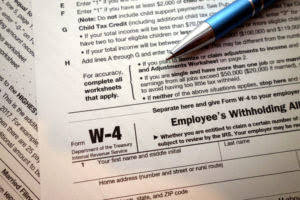
This new standard was established to enhance transparency into liabilities resulting from leasing arrangements and reduce off-balance sheet activities. Now that we’ve covered the steps of how to complete the ASC 842 journal entries for both operating and finance leases, how do you record them? With easy-to-use lease accounting software readily available, most accountants prefer software over complicated and prone-to-error spreadsheets for their lease accounting calculations. The Financial Accounting Standards Board (FASB) created the standard in 2016, with the goal of correcting the perceived problem of lessees leaving operating leases off their balance sheets. The transition from the previous lease accounting standards to ASC 842 compliance requires making decisions about a variety of practical expedients that affect how leases are defined and accounted for moving forward. Without these transition relief options, companies must reassess all existing contracts to (1) determine which ones contain leases and (2) classify (or reclassify) those leases.
- The FASB continues to evaluate stakeholder feedback on the adoption of ASC 842.
- If you’re processing multiple invoices each month, you probably need to buy accounting software.
- Under the new standard, recognizing a lease liability and lease asset for all leases formerly classified as operating is a significant change.
- When measuring an operating lease, a single lease cost is calculated so that the remaining cost of the lease is allocated over the remaining lease term on a straight-line basis.
- If a lease does not meet any of the above criteria, it is considered an operating lease.
- We recommend checking out this guide, reviewing this list of mistakes to avoid, or considering investing in lease accounting software that stays automatically compliant.
- The software should address the accounting, reporting, and document management needs your company, auditors, and regulators require.
For that reason, the lessee is not allowed to make certain changes to the asset without permission from the lessor, as laid out in the lease agreement. Should the lessee damage or lose the asset, compensation will be owed if the asset is not repaired or recovered. The lessee may be able to purchase the asset fully from the lessor at the end of the contract term. Your solution’s out-of-the-box forecasting reports should be able to help determine the impact your lease portfolio has on important reporting metrics, such as earnings per share and EBITDA.
Lease Accounting: Operating Leases, Finance Leases, and the Confusing, Changing Rules
Yes, ASC 842, also known as the new lease accounting standard, is part of the Generally Accepted Accounting Principles (GAAP). It significantly changes how companies account for operating leases and contributes to the transparency of lease obligations on financial statements. ASC 842 lease accounting replaces the previous GAAP lease accounting standard, ASC 840, which classified certain leases as “operating leases,” which were not capitalized on the balance sheet. As a result, they were excluded from many financial analysis ratios, such as the current ratio, and these exclusions could skew an investor’s understanding of a company’s performance. Our software allows accountants to apply whichever standard they follow to their reporting. Rather than label the asset as a capital asset – such as a truck – the ROU description will enable financial statement users to separate those assets actually owned from those capitalized because of leases.

Let’s say a company, ABC Corporation, enters into a lease agreement to rent office space for five years. The annual lease payments are $10,000, payable at the end of each year (what a deal!) and the lease agreement does not transfer ownership of the property to ABC Corporation when the lease has ended. Learn the basics of lease accounting, how it can impact your business, the latest ASC 842 lease accounting standard, and see a real-world example. A lessor is a person or legal entity that owns an asset that is leased under an agreement to a lessee. The asset is most often housing, though assets can also include items such as vehicles, computers, office space, or an intangible property, such as a brand name.
Examples of lease
The lease receivable is measured as the present value of lease receipts expected through the term, and deferred inflow of resources are measured as the lease receivable adjusted for prepayments or incentives paid. Furthermore, there must be a contract between the parties and transfer of the underlying asset to what is lease accounting the buyer-lessor has to satisfy performance obligations (see Topic 606). The decrease in long-term lease liability is the adjustment to record the amount of short term liability due in the next 12 months. Note that this does not include the first payment made, as it’s not considered a future lease payment.
Recent Comments